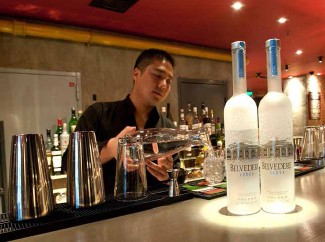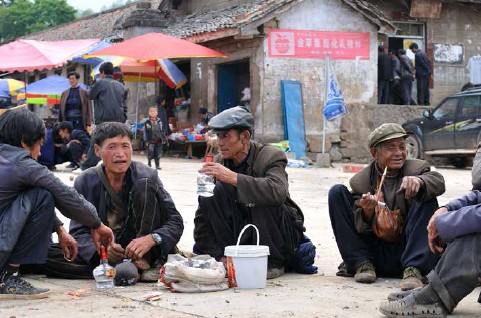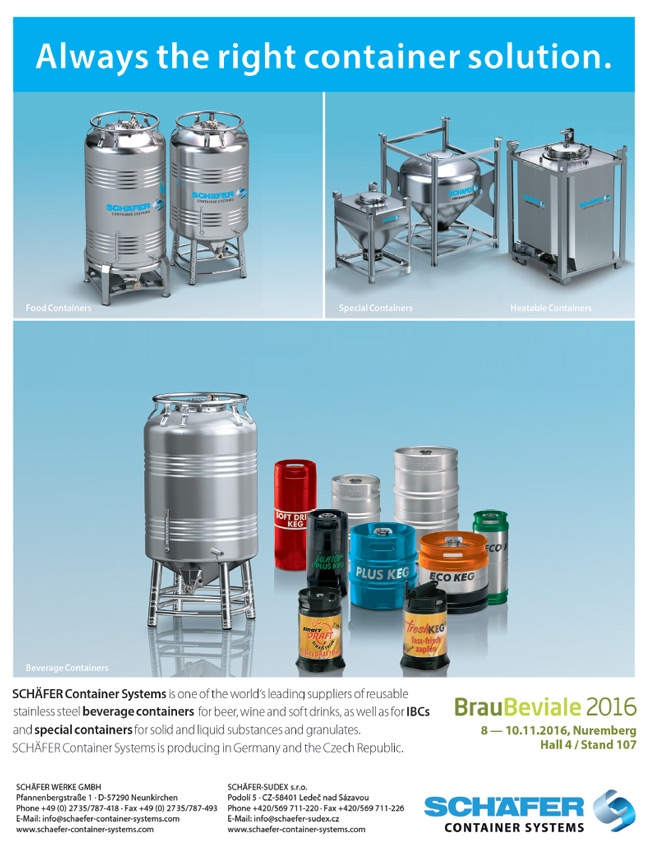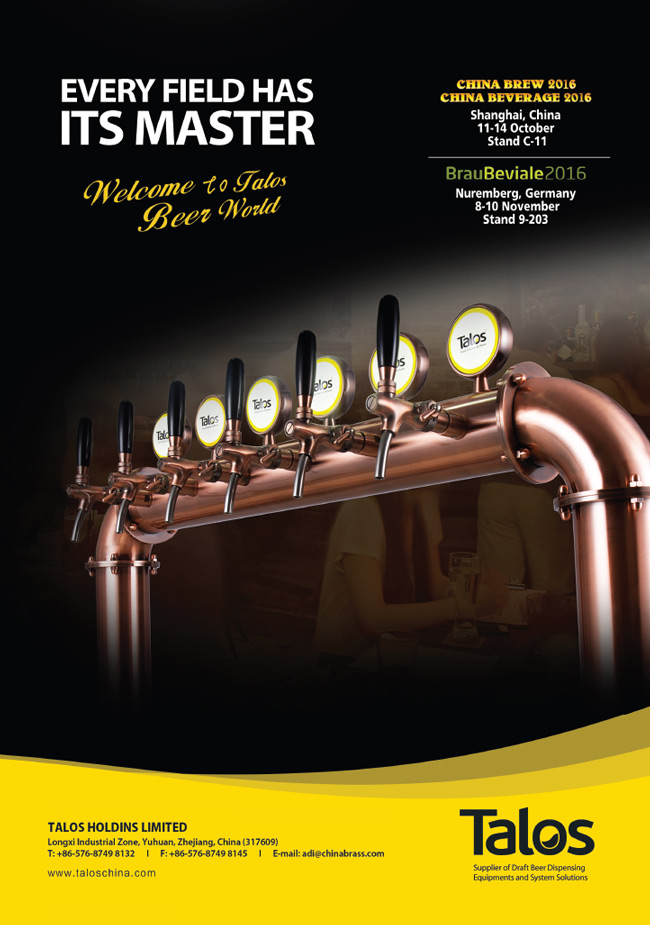Do the Chinese drink a lot of alcohol?
According to WHO, in China 44% of people over 15 consume alcohol. As we can see the share of alcohol consumers a little exceeds the world’s average 37%, but is behind the USA and Europe.
And if we transfer the consumed drinks into hard alcohol, China with its 8.8 litre per capita yearly will be much ahead of the neighbouring large countries, that is Vietnam (7.2 l/person), Japan (6.6), Thailand (6.5), and India (5.2).
 For example, in Japan comparatively more people consume small amounts of alcohol, and in India few people drink rather much. China occupies a midposition both by the number of those who drink and by consumption rates and in this account resembles Vietnam. Such proportion gives China the leadership in alcohol consumption level in both Asia and the world.
For example, in Japan comparatively more people consume small amounts of alcohol, and in India few people drink rather much. China occupies a midposition both by the number of those who drink and by consumption rates and in this account resembles Vietnam. Such proportion gives China the leadership in alcohol consumption level in both Asia and the world.
Taking into account the population number, China ranks second to none with a 28% share by alcohol consumption volumes in the world.
Do the Chinese drink a lot of beer?
Since 2002, China has occupied the first place in the world by the volumes of beer output. China was rapidly increasing its weight till 2013, when it accounted for 25.6% of the global beer market, but then its share started decreasing and by the end of 2015, it amounted to 24.2%.
The per capita beer consumption in 2014 was 36 liters. If we compare China to the neighbouring countries, this volume can be considered average. More beer was consumed by wealthier citizens of Japan, South Korea, and Russia. However, they paid more for it. And in Asia one can find examples of comparable consumption volumes with much lower GDP per capita, that is, Vietnam. Or of lesser consumption than in China with higher per capita GDP, that is, Kazakhstan.
Obviously, the comparatively high level of beer consumption by the Chinese is connected to its very low price and affordability. In this respect India, where due to the low living standard and a very high beer price its consumption amounts to only 2 liters per capita, is an antipode to China and most of Asian countries.
Alcohol consumption structure
The fluctuations within the consumption structure of alcoholic drinks take place in the conditions of slower absolute volumes of output. Under the official data, in 2015, their production fell by 2% to 641.26 mln hl*, mostly due to beer output decline.
* If we do not include raw alcohol production.
However, beer is a product that the Chinese like the most, owing to its cheapness and wide distribution. If you look at the production structure, the largest share belongs to beer industry – …%. The production of liquors accounted for …% of the total production of alcohol-containing products. Judging by the production structure, the Chinese have not yet developed a taste for wine. It accounts for only …% of the total production of the industry.
But if the beer consumption goes down, what is in this case consumed by those who give it up?
In 2016, many industries went on developing in the same direction as in 2015. According to the estimated data, during the period from January till May 2016, only the beer consumption saw a …% decline, instead, the liquors production increased by …% and wine production had a …% increase.
As only beer was being pushed out from the alcohol range, during the recent years production volume estimation of alcoholic beverage did not detect any decline if accounted in hard alcohol. Year on year, China’s population was expanding the national alcohol consumption and emerging stagnation in 2014 again transformed into a well-defined one in 2015 (and the early 2016). In particular, in 2015, the Chinese drank up …% more hard alcohol than in 2014.

In terms of hard alcohol, beer occupies the second place in the structure of alcoholic drinks production. In 2015, the share of hard alcohol in beer amounted to …% of the total volume, and …% in wine. Liquor takes up more than ….
 The consumption growth of hard alcohol against the consumption structure change in favor of the strong alcohol has been observed for the recent 10 years. And such situation is indicative for China in particular (and some other Asian countries).
The consumption growth of hard alcohol against the consumption structure change in favor of the strong alcohol has been observed for the recent 10 years. And such situation is indicative for China in particular (and some other Asian countries).
For example, in neighbouring Russia, since 2008, there has been a decline of the general alcohol consumption. But prior to that, during the period of the fast economy growth, beer was actively forcing strong alcohol out of the market. In China the population’s well-being led to the reverse effect.
Beer vs Liquors – pressure from two sides
The growth of strong alcoholic beverages market share and its decline for beer were particularly obvious in the difficult for the Chinese economy year of 2009 and recently, which was not an easy time either. As we have found out, basing on CHNS data, in adverse conditions, beer lovers are more sensitive to their well-being decline than liquors consumers.
But we also found out that one of the constant growth drivers of strong alcohol share is the nation’s ageing and resultantly, increase in number of middle-aged and elderly people who move to liquors consumers’ group. Here one should keep in mind that by substitution of consumed hard alcohol, consumption of a 40° drink would compensate an eightfold beer consumption decline, and the strength of Chinese alcohol often exceeds 60°.
According to surveys by Nielsen Media Research the main consumers of spirits are middle class people of 35-45 with middle class spending power. High-end liquor consumption is still the mainstream. At the same time consumption of low-end liquor is becoming an important driver for alcohol industry.
In other words the beer market in competition with liquors is losing consumers from two sides – both from the cheap and premium ones depending on adult Chinese income.
For the wealthiest of them, as the income grows, the price difference between beer and different categories of elite spirits gaining popularity, is fading away. Beer now has got a lot of status alternatives such as gin, whiskey, and vodka both by foreign and domestic production.
However the market of the elite alcohol sustained a shock. In 2012 President Xi Jinping launched a frugality campaign that banned lavish dinners and gift giving. In view of the slower rates of economy development, the authorities declared war to corruption, alcoholism, and extravagant living in China. And officers and public servants was paid a closest attention.
Yet the market of strong elite alcohol is targeted not only at officers and wealthy elder people. And not necessarily always well-off consumers switch from big volumes of beer to smaller volumes of whiskey or cocktails.
 Elite alcohol competes with beer also by forming loyalty in young generation of well-off consumers. The high price and the club style of elite alcohol consumption especially in cocktails, stand in stark contrast to the price and consumption style of beer. So, even a minor volume increase of elite alcohol sales is associated with a considerable change of the youth’s preferences.
Elite alcohol competes with beer also by forming loyalty in young generation of well-off consumers. The high price and the club style of elite alcohol consumption especially in cocktails, stand in stark contrast to the price and consumption style of beer. So, even a minor volume increase of elite alcohol sales is associated with a considerable change of the youth’s preferences.
On the other market pole, beer competes with bai jiu. This traditional drink is particularly widely spread in rural areas.
According to social researches and surveys, bai jiu accounts for …% of the alcohol consumed in China. This figure contradicts statistical data of a …% share of liquors in general. But the point is that bai jiu is often produced and distributed informally, that is why, the data concerning its production are not fully registered by the official statistics. The range of bai jiu tastes and prices is very wide, as it is manufactured by distillation from various materials.
South China Morning Post wrote that bai jiu market still grew …% a year by volume during 2012-2014, making it the most resilient performer among all major categories in the alcohol industry, far outperforming the nation’s beer market. In 2015 bai jiu sales rates grew slower but were still high against beer. And producers start focusing on expensive drinks.
 However the newspapers tell about the official market and cities. The sales data are far from accurately reflecting the consumption in rural areas where bai jiu is the main alcohol drink.
However the newspapers tell about the official market and cities. The sales data are far from accurately reflecting the consumption in rural areas where bai jiu is the main alcohol drink.
In one of the researches alcohol (all types) was consumed by …% of interviewed villagers (…% of males, …% of females)*. Of the 207 drinkers in the sample, …% drank bai jiu, …% drank beer, and …% drank commercial spirits. Bai jiu was most often consumed at mealtimes. Bai jiu drinkers believed moderate drinking was healthy and that drinking improved the social atmosphere.
* Traditional grain alcohol (bai jiu) production and use in rural central China: implications for public health. BMC Public Health, 15, Art No 1261, 11pp.
In the country, most of the bai jiu makers had learned their craft from a family member or by apprenticeship, and their product was sold to neighbours or nearby villagers. Bai jiu makers typically had a business license and a health certificate. The shops that bought and sold traditional bai jiu were family-run businesses that sold both traditional bai jiu and commercial alcohol to clientele within a close social network.
Beer vs Cocktails – fashion takes toll
According to Nielsen China general manager, Fan Yijin, currently the consumer behaviour and the consumption model is changing and so it is crucially important for brewers to attract young audience aged 20-25, who are only acquainting themselves with alcohol and start traditionally with beer.
Ageing population opts for liquors. And what about young people when they want to buy alcohol?
 The consumption of cocktails and other alcoholic beverages has become a characteristic feature of Chinese youth of the 21st century. Today cocktails, especially RIO, have become a fashionable trend that is only gaining momentum.
The consumption of cocktails and other alcoholic beverages has become a characteristic feature of Chinese youth of the 21st century. Today cocktails, especially RIO, have become a fashionable trend that is only gaining momentum.
By the statistical reports in 2013 the share of “non-core” beverages (which includes low-alcohol cocktails) in the general structure of alcohol was …%. In 2015 it has grown to …%.
In addition to the numeral reduction of today’s youth the change of tastes of the group, is an important factor. The generation of the 90s prefers low-alcohol drinks to beer, especially the cocktails. Thus, in 2014 the pre-cocktail industry growth rate was …%. …% of the market of low-alcohol products accounted for RIO cocktail, ice and other outstanding products.
The spokesperson of company Black Cattle Food Co., Ltd. noted that at the beginning of January 2015, the volume of cocktail market was about … bln yuan, with a growth rate of …-…%. In a few years, this category of beverages can easily enter the top three industries by volume of the market, having left wine behind.
Cocktails are steadily taking over the volumes from beer and liquor as well as other alcoholic beverages. The advertising on TV and bright, modern packaging of the drinks contribute to such a rapid growth. Moreover, now many girls can enjoy a pleasant taste of a low-alcoholic cocktail instead of beer with its bitterness.
 The brewing companies in their turn strive to satisfy the growing demand for low-alcohol production and fill the vacant non-beer niche on the market, thus compensating the output losses of the main product. This induces the growth of cocktails production volume and their share growth in the general alcohol structure.
The brewing companies in their turn strive to satisfy the growing demand for low-alcohol production and fill the vacant non-beer niche on the market, thus compensating the output losses of the main product. This induces the growth of cocktails production volume and their share growth in the general alcohol structure.
The world brewing leader, company AB InBev also supported the cocktail mainstream in China and in January 2016, presented two new non-beer beverages – Charm Night (MixxTail) and JA Apple wine (Johnny Appleseed Cider).While the first drink is an alcoholic cocktail targeted at the youth and sales at night clubs, cider is intended to cover such categories of consumers as youth and women of China.
To get the full article “Analysis of beer market in China” in pdf (60 pages, 65 diagrams) propose you to buy it ($45) or visit the subscription page.
2Checkout.com Inc. (Ohio, USA) is a payment facilitator for goods and services provided by Pivnoe Delo.





